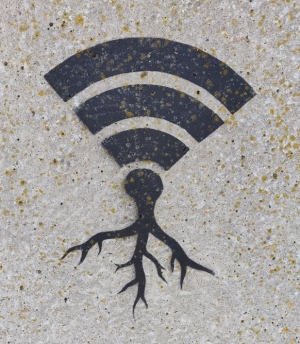In today's digital age, communication has undergone a transformative evolution. Technological advancements have revolutionised the way we connect with one another, rendering traditional landline phones seemingly archaic. The widespread adoption of mobile devices and internet-based communication platforms has raised questions about the future of landline phones. In this article, we explore the current landscape and discuss the phasing out of landline phones in 2025.
The Changing Communication Landscape: In recent years, there has been a noticeable decline in the use of landline phones. Mobile phones and internet-based communication tools have become the go-to choices for individuals and businesses alike. The rise of smartphones, with their enhanced functionality and portability, has led to a significant shift in consumer preferences. Additionally, internet-based platforms such as Voice over Internet Protocol (VoIP) services offer cost-effective alternatives to traditional landlines.
Factors Driving the Transition:
1. Mobile Revolution: Mobile phones have become an integral part of our lives. With the convenience of carrying a device that combines multiple functionalities, such as calling, messaging, and internet access, landline phones have lost their appeal.
2. Internet Connectivity: The advent of high-speed internet has enabled the growth of internet-based communication platforms. VoIP services, such as Skype, WhatsApp, and Zoom, allow users to make calls, send messages, and hold video conferences across the globe. These services offer a more versatile and cost-effective alternative to landlines.
3. Cost and Maintenance: Landline phone services often come with monthly line rental charges, additional fees, and long-distance call costs. On the other hand, internet-based communication platforms can offer low-cost or even free services, reducing the financial burden on users. Additionally, the maintenance and repair of landline infrastructure can be expensive for service providers.
4. Technological Advancements: The rapid advancement of technology has enabled innovative communication methods that surpass the capabilities of landline phones. Features like voice assistants, video calls, and seamless integration with other devices make mobile and internet-based communication options more appealing.
The Phasing Out of Landline Phones in 2025: The article you linked to suggests that landline phones are being phased out in 2025, marking a significant shift in our communication landscape. While landlines will not vanish overnight, it is evident that their prominence will continue to diminish. Here are a few reasons behind this transition:
1. Preference: As consumers embrace the convenience and versatility of mobile phones and internet-based communication platforms, the demand for landline services declines. Service providers are adapting to this changing preference by reallocating resources to meet the growing demand for digital communication.
2. Infrastructure Upgrades: Telecommunication companies are investing heavily in upgrading and expanding their mobile and internet infrastructure. The focus is now on providing faster and more reliable internet connections and improving mobile network coverage, further reinforcing the transition away from landline phones.
3. Environmental Impact: Phasing out landlines also has positive environmental implications. Traditional landline phones require physical copper wiring and infrastructure, which necessitates extensive mining and manufacturing processes. By embracing digital alternatives, we reduce our carbon footprint and contribute to a more sustainable future.
Conclusion: The phasing out of landline phones in 2025 signifies the inevitable progression towards a digital-centric communication landscape. Mobile phones and internet-based platforms have reshaped the way we connect, providing greater flexibility, convenience, and cost-effectiveness. While landline phones may still serve specific needs for some individuals and businesses, it is clear that their prominence will continue to wane as technology advances. As we embrace this new era of communication, it is crucial to stay informed and adapt to the evolving technological landscape.
A new report by the International Data Corporation (IDC) suggests that the Wi-Fi industry is in for a rollercoaster ride, with a surge in demand projected for 2024. The report reveals that while there was an 8.6 percent growth in Wi-Fi-enabled product shipments in 2021, there was a decline in 2022, the first in Wi-Fi's decades-long history. This decline was attributed to the pandemic-driven market changes that caused a decrease in smartphone and PC shipments. The data showed that Wi-Fi product shipments fell by 4.9 percent in 2022 to 3.8 billion products.
The report forecasts that the Wi-Fi market will remain relatively flat in 2023, with shipments of just 3.9 billion products. However, in 2024, IDC predicts a 6.4 percent growth to 4.1 billion products. The report also suggests that two-thirds of shipments in 2023 will be Wi-Fi 6 or Wi-Fi 6E, which will continue to expand into more IoT devices as more Wi-Fi 6 chipsets targeting IoT devices hit the market.
IDC's Research Director of Connectivity and Smartphone Semiconductors, Phil Solis, stated that while the decline in Wi-Fi shipments in 2022 was unprecedented, growth is on the horizon. This will be driven by more Wi-Fi 6 and 6E devices coming into play, Wi-Fi 7 chips ramping up in higher-end devices and access points, and more discrete Wi-Fi solutions in primary client devices and other product types.
The report highlights that eight Wi-Fi-enabled product types will ship over 100 million units in 2023 and will increase to 11 product types in 2027. Primary client devices such as smartphones, media tablets, and PCs are still key drivers of shipments, accounting for around 40 percent of Wi-Fi shipments in 2023. However, primary client devices' recent share loss is due to the flattening of that market coupled with the growth of IoT or endpoint devices with Wi-Fi. IDC predicts that IoT will surpass all primary client devices in 2027, reaching 37 percent of shipments in 2022 and surpassing 40 percent in 2027.
IDC's report, Worldwide Wi-Fi Technology Forecast, 2023-2027, covers the shipments of Wi-Fi-enabled products from 2005 to 2027. The data is segmented into 11 markets, over 50 product categories, and a few hundred product types. It is also segmented into primary clients, IoT/endpoints, heavy and light edge infrastructure, networking infrastructure, and storage mechanisms. Finally, everything is segmented by Wi-Fi protocols up to Wi-Fi 7.
In conclusion, while the Wi-Fi industry experienced a decline in shipments in 2022, it is expected to bounce back with a surge in demand projected for 2024. With more Wi-Fi 6 and 6E devices coming into play and Wi-Fi 7 chips ramping up in higher-end devices and access points, the future of the Wi-Fi industry looks promising.




